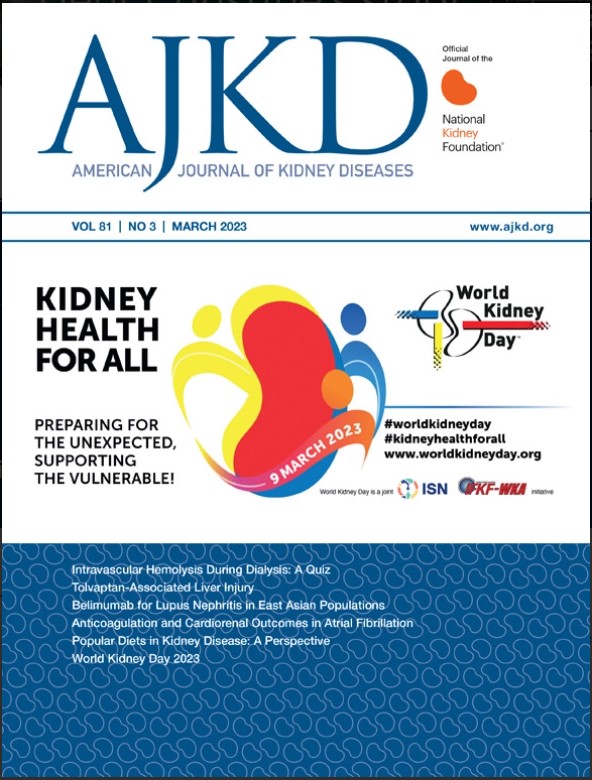The Nephrologist's Perspective in Evaluation and Management of Localized Renal Masses: Core Curriculum 2025.
IF 8.2
1区 医学
Q1 UROLOGY & NEPHROLOGY
引用次数: 0
Abstract
The evaluation and management of renal masses, predominantly of the clear cell renal cell carcinoma subtype, have been evolving over the past several years and demanding greater attention from nephrologists. Oncologic survival of localized tumors approaches 100%, where survival is more closely tied to underlying comorbidities including chronic kidney disease (CKD). Early diagnosis and thus increasing prevalence related to incidental discovery of renal masses allows greater emphasis on nephron-sparing procedures and for residual kidney function preservation. Compared with radical nephrectomy, partial nephrectomy is associated with higher survival and greater preservation of kidney function. Ablative therapies and active surveillance are alternative options for patients with higher surgical risk. Although it is not in the purview of the nephrologist to determine the exact therapy, our role in the preservation of kidney function for these patients who have CKD risk factors or with underlying CKD is crucial for the well-being of the patient. Early nephrology partnership in a multidisciplinary approach with the treatment team including the urologist, radiologist, pathologist, and potentially the oncologist (with advanced disease) is the ideal treatment strategy for eradication of their kidney cancer while optimizing conditions for maximal kidney function preservation.肾科医生在评估和管理局部肾肿块中的观点:核心课程2025。
肾肿块的评估和治疗,主要是透明细胞肾细胞癌亚型,在过去几年中一直在发展,需要肾病学家更多的关注。局部肿瘤的肿瘤生存率接近100%,其中生存率与潜在的合并症(包括慢性肾脏疾病(CKD))更密切相关。早期诊断和因此增加的发病率与偶然发现的肾肿块有关,这使得更重视保留肾脏的手术和保留残余肾功能。与根治性肾切除术相比,部分肾切除术具有更高的生存率和更好的肾功能保存。消融治疗和主动监测是手术风险较高的患者的替代选择。虽然确定确切的治疗方法不在肾病专家的职责范围内,但我们在保护这些有CKD危险因素或有潜在CKD的患者的肾功能方面的作用对患者的健康至关重要。与泌尿科医生、放射科医生、病理学家和潜在的肿瘤科医生(疾病晚期)等治疗团队进行多学科的早期肾脏病合作是根除肾癌的理想治疗策略,同时优化条件,最大限度地保留肾功能。
本文章由计算机程序翻译,如有差异,请以英文原文为准。
求助全文
约1分钟内获得全文
求助全文
来源期刊

American Journal of Kidney Diseases
医学-泌尿学与肾脏学
CiteScore
20.40
自引率
2.30%
发文量
732
审稿时长
3-8 weeks
期刊介绍:
The American Journal of Kidney Diseases (AJKD), the National Kidney Foundation's official journal, is globally recognized for its leadership in clinical nephrology content. Monthly, AJKD publishes original investigations on kidney diseases, hypertension, dialysis therapies, and kidney transplantation. Rigorous peer-review, statistical scrutiny, and a structured format characterize the publication process. Each issue includes case reports unveiling new diseases and potential therapeutic strategies.
 求助内容:
求助内容: 应助结果提醒方式:
应助结果提醒方式:


